Date comparison in MongoDB
This MongoDB tutorial discusses the issue of returning Date-based queries. In addition, there is also a good tutorial on how to use Date Range queries in MongoDB.
Using date ranges in MongoDB
We will learn to write MongoDB date range queries to fetch records based on a timestamp or date range. For example, a MongoDB date greater than or less than a time or date is an example of a date query.
To run a query with a date range in MongoDB, use the following basic syntax.
db.collection.find({
day: {
$gt: ISODate("2020-01-21"),
$lt: ISODate("2020-01-24")
}
})
This query returns all records in the collection where the Day field is greater than or equal to 2020-01-21 but less than or equal to 2020-01-24.
Using $gt in MongoDB
grammar:
{ field: { $gt: value } }
The value of the field is greater than (that is >) the supplied value; therefore, $gt selects those documents. Comparison operators perform comparisons on fields only if the BSON type matches the query value type for most data types.
Type brackets in MongoDB allow limited cross-BSON comparisons. The following example uses the Inventory collection.
db.inventory.insertMany( [
{
"item": "nuts", "quantity": 31,
"carrier": { "name": "import", "fee": 3 }
},
{
"item": "screws", "quantity": 50,
"carrier": { "name": "import", "fee": 4 }
},
{
"item": "washers", "quantity": 11,
"carrier": { "name": "import", "fee": 1 }
}
] )
Selects all documents in the inventory collection where the quantity is greater than 20.
db.inventory.find( { quantity: { $gt: 20 } } )
Output:
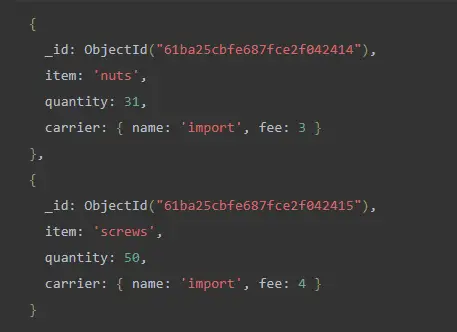
The following example sets the price field based on a comparison of $gt to a field in the embedded document.
db.inventory.updateOne(
{ "carrier.fee": { $gt: 2 } }, { $set: { "price": 9.99 } }
)
Output:
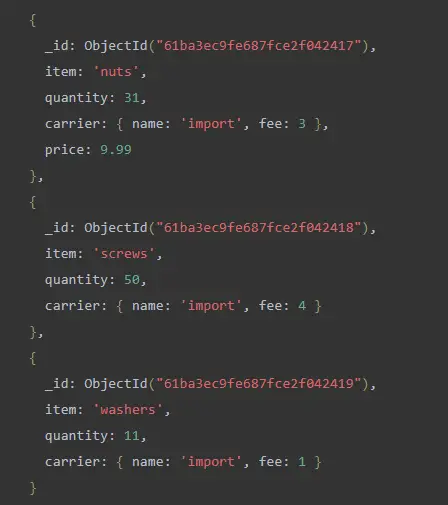
This updateOne()method looks for an embedded document named carrier that contains a fee subfield. The first document it finds has a fee value greater than 2; it sets the price to: 9.99.
Use updateMany()to change the value of the price field in all documents where carrier.fee is greater than 2.
Using $gte in MongoDB
grammar:
{ field: { $gte: value } }
$gteSelects >=documents where the field value is greater than or equal to (i.e.) a provided value (e.g. value). The following example uses the inventory collection.
db.inventory.insertMany( [
{
"item": "nuts", "quantity": 31,
"carrier": { "name": "import", "fee": 3 }
},
{
"item": "bolts", "quantity": 51,
"carrier": { "name": "import", "fee": 4 }
},
{
"item": "washers", "quantity": 11,
"carrier": { "name": "import", "fee": 1 }
}
] )
All documents in the inventory collection with a quantity greater than or equal to 20 should be selected.
db.inventory.find( { quantity: { $gte: 20 } } )
Output:
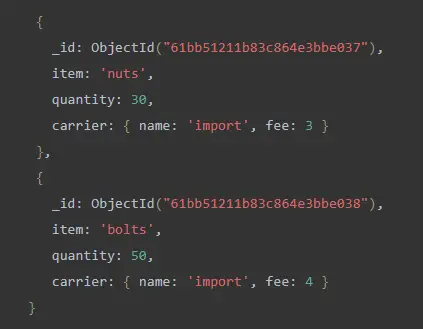
The price field is set in the following example and compared to a field in the embedded document using $gte.
db.inventory.updateMany(
{ "carrier.fee": { $gte: 2 } }, { $set: { "price": 9.99 } }
)
Output:
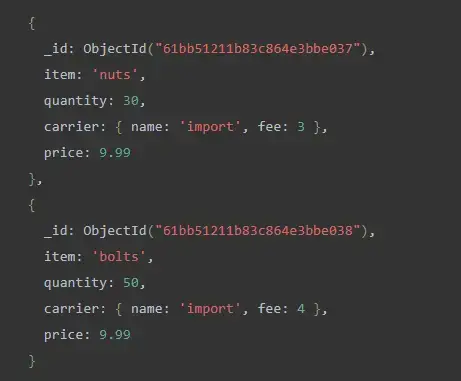
Using $lt in MongoDB
syntax:
{ field: { $lt: value } }
$ltSelects “documents where the field value is less than (that is) the provided value. The following example uses the previous inventory collection.
Selects all documents in the inventory collection that have a quantity less than 20.
db.inventory.find( { quantity: { $lt: 20 } } )
Output:
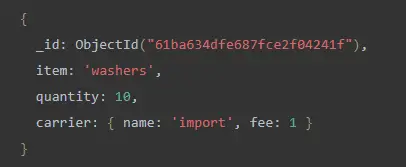
The next example sets the price field based on a $lt comparison to a field in an embedded document.
db.inventory.updateMany( { "carrier.fee": { $lt: 20 } }, { $set: { price: 9.99 } } )
Output:
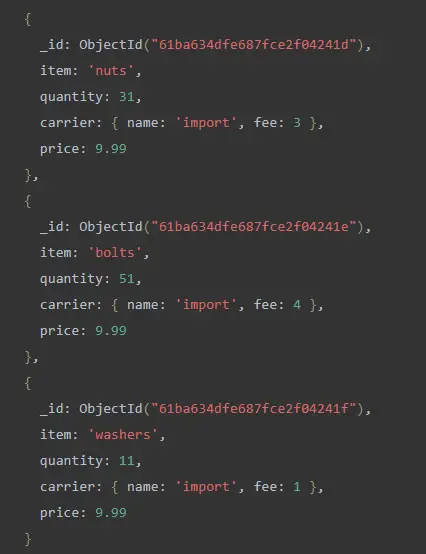
Using $lte in MongoDB
syntax:
{ field: { $lte: value } }
$lteSelects =documents where the field value is less than or equal to (that is) the provided value. The following example uses the previous inventory collection.
Consider the following example.
db.inventory.find( { quantity: { $lte: 20 } } )
This query returns all entries in the Inventory collection that have a Quantity field value less than or equal to 20.
Output:
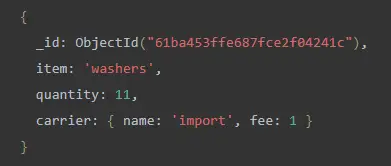
The price field is set in the following example, using $lte to compare to a field in the embedded document.
db.inventory.updateMany(
{ "carrier.fee": { $lte: 5 } }, { $set: { price: 9.99 } }
)
Output:
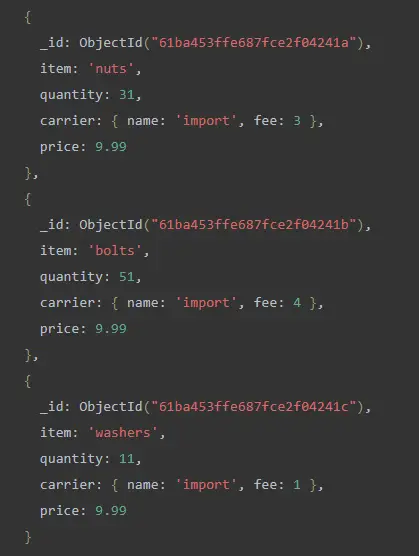
The information below demonstrates how to apply this syntax to a dataset using the following documents.
db.data.insertOne({day: new Date("2022-01-20"), amount: 40})
db.data.insertOne({day: new Date("2022-01-21"), amount: 32})
db.data.insertOne({day: new Date("2022-01-22"), amount: 19})
db.data.insertOne({day: new Date("2022-01-23"), amount: 29})
db.data.insertOne({day: new Date("2022-01-24"), amount: 35})
Find documents between two dates in MongoDB
Use the following query to discover all documents that have the "day" field between two dates.
db.data.find({
day: {
$gt: ISODate("2020-01-21"),
$lt: ISODate("2020-01-24")
}
})
Output:
{ _id: ObjectId("618548bc7529c93ea0b41490"),
day: 2020-01-22T00:00:00.000Z,
amount: 19 }
{ _id: ObjectId("618548bc7529c93ea0b41491"),
day: 2020-01-23T00:00:00.000Z,
amount: 29 }
Find documents after a specific date in MongoDB
To find all documents where the Day field is set to a date after a specific date, use the following query.
db.data.find({
day: {
$gt: ISODate("2020-01-22")
}
})
Output:
{ _id: ObjectId("618548bc7529c93ea0b41491"),
day: 2020-01-23T00:00:00.000Z,
amount: 29 }
{ _id: ObjectId("618548bc7529c93ea0b41492"),
day: 2020-01-24T00:00:00.000Z,
amount: 35 }
Find documents before a specific date in MongoDB
Use the following query to find all documents where the Days field is set before a specified date.
db.data.find({
day: {
$lt: ISODate("2020-01-22")
}
})
Output:
{ _id: ObjectId("618548bc7529c93ea0b4148e"),
day: 2020-01-20T00:00:00.000Z,
amount: 40 }
{ _id: ObjectId("618548bc7529c93ea0b4148f"),
day: 2020-01-21T00:00:00.000Z,
amount: 32 }
Date based comparison in MongoDB
Let's use MongoDB to return a date-based query. First, create a collection called "data" with a document to further understand the concept.
db.data.insertOne({"PassengerName":"John","PassengerAge":23,"PassengerArrivalTime":new ISODate("2018-03-10 14:45:56")});
{
"acknowledged" : true,
"insertedId" : ObjectId("5c8a57be9064dcd4a68b70e4")
}
db.data.insertOne({"PassengerName":"Larry","PassengerAge":21,"PassengerArrivalTime":new ISODate("2018-05-19 11:10:23")});
{
"acknowledged" : true,
"insertedId" : ObjectId("5c8a57bf9064dcd4a68b70e5")
}
db.data.insertOne({"PassengerName":"Mike","PassengerAge":24,"PassengerArrivalTime":new ISODate("2018-08-25 16:40:12")});
{
"acknowledged" : true,
"insertedId" : ObjectId("5c8a57bf9064dcd4a68b70e6")
}
db.data.insertOne({"PassengerName":"Carol","PassengerAge":26,"PassengerArrivalTime":new ISODate("2019-01-29 09:45:10")});
{
"acknowledged" : true,
"insertedId" : ObjectId("5c8a57bf9064dcd4a68b70e7")
}
Use find()the function to display all documents in a collection.
db.data queryFromDate.find().pretty();
Output:
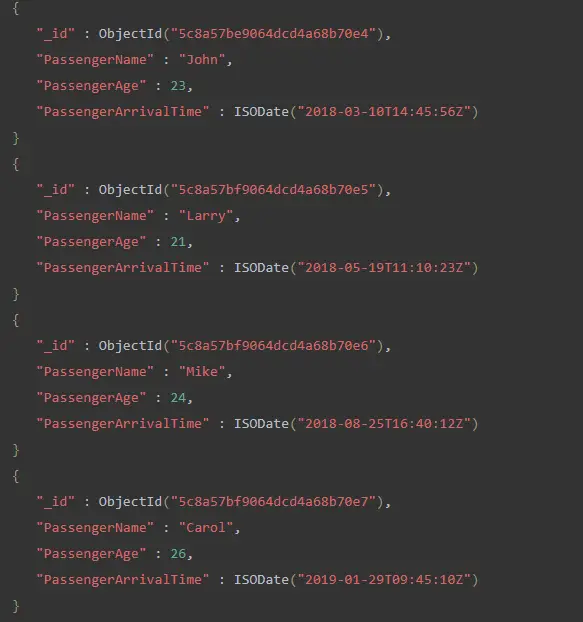
Following is the return query based on date. Records with creation date after 2018-05-19T11:10:23Z will be returned.
> db.data queryFromDate.find({"PassengerArrivalTime" : { $gte : new ISODate("2018-05-19T11:10:23Z") }}).pretty();
Output:
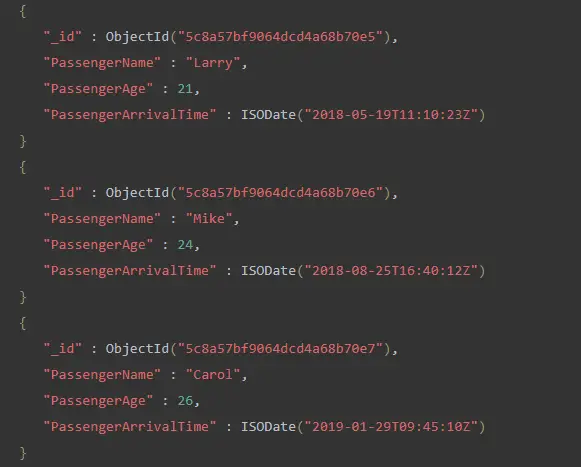
In this article, we have learned how to use Date()the method. The example briefly explains the $gte and $lte commands and the query based on the returned data.
For reprinting, please send an email to 1244347461@qq.com for approval. After obtaining the author's consent, kindly include the source as a link.
Related Articles
Composite Indexes in MongoDB
Publish Date:2025/04/28 Views:151 Category:MongoDB
-
Sometimes we need to create an index that contains multiple fields. For example, if your document contains a field called Sex, it may contain two other fields, such as Male and Female. These fields may have values like Yes or No. In t
$unset operator in MongoDB
Publish Date:2025/04/27 Views:78 Category:MongoDB
-
This article will discuss how the $unset operator works in MongoDB. Additionally, we will demonstrate the use of this operator to remove a field from all documents in a MongoDB collection. $unset operator in MongoDB $unset is an operator us
Compass Filters in MongoDB
Publish Date:2025/04/27 Views:133 Category:MongoDB
-
This short article will cover the various ways to use Compass filters in MongoDB . Compass Filters in MongoDB MongoDB has a GUI called Compass . It is also known as MongoDB GUI. Users can use MongoDB to inspect the contents of their stored
Sorting by timestamp in MongoDB
Publish Date:2025/04/27 Views:54 Category:MongoDB
-
This article will introduce various methods of sorting timestamps in MongoDB. Sorting by timestamp in MongoDB sort() The method will sort documents in MongoDB. The method accepts a document containing a list of fields and the order in which
Deleting a user from a database in MongoDB
Publish Date:2025/04/27 Views:51 Category:MongoDB
-
This article will explain how to delete a user from a MongoDB database. In addition, we will see an example to make the topic easier to understand. Deleting a User from a MongoDB Database Sometimes we need to remove a particular user from t
Deleting items by ID in MongoDB
Publish Date:2025/04/27 Views:159 Category:MongoDB
-
Sometimes we need to delete data from a database based on specified criteria. Unlike other SQL databases, MongoDB does not include SQL queries for this purpose. Instead, it uses commands. This article will discuss how to delete documents ba
Using ISODate for date queries in MongoDB
Publish Date:2025/04/27 Views:77 Category:MongoDB
-
This MongoDB tutorial article will explain Date() the methods. This article introduces different ways to query using dates. Date() Method in MongoDB Date() The method returns the date as a string or a Date object. In the MongoDB shell or mo
Return unique values in MongoDB
Publish Date:2025/04/27 Views:191 Category:MongoDB
-
In this article, we will address how to use the MongoDB distinct() method to return unique values. In addition, returning unique values in arrays and fields is discussed. In MongoDB, sometimes you may want to present or return unique
Querying documents with array size greater than 1 in MongoDB
Publish Date:2025/04/27 Views:154 Category:MongoDB
-
When working with projects where you need to validate the size of an array or find elements whose size is greater or less than a certain length, you might use MongoDB operators such as $size, $where, $exists, etc. The methods discussed belo

